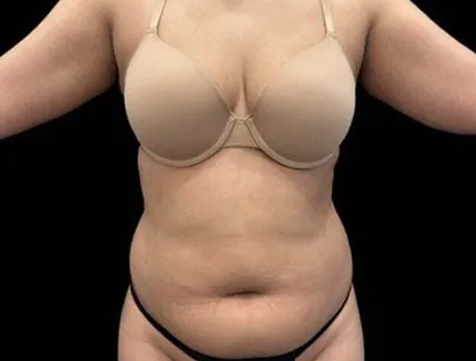Daddy Makeover
Consultations offered at our two convenient locations in Lancaster and Los Angeles, CA

Dr. Sean Satey offers a range of specialized services for males at his office. These services are tailored to enhance male features and address specific concerns such as gyno, jawline, double chin, abdominal etching and much more.
Contents
Daddy Makeover
A Daddy Makeover is a procedure that involves both an abdominal and chest procedure. This can include either an abdominoplasty (tummy tuck) or liposculpting, in addition to gynecomastia surgery or chest masculinization.
The first thing that needs to be addressed is – where’s the problem area?
Your abdominal fat can be broadly categorized into two categories: ABOVE and BELOW the abdominal muscles.
The fat that is below your abdominal rectus muscles is termed, visceral fat. That’s the fat that surrounds your organ systems. Unfortunately, that fat, or adiposity, cannot be addressed with liposculpting. Instead, diet, exercise and bio-identical hormone therapy are the only methods that can address the visceral adiposity.
Now, if your abdominal adiposity is located above the abdominal rectus muscles, this is termed as subcutaneous fat – or simply put, fat under the skin (and above the muscles).
This fat CAN be subjected to liposculpting and/or excision!
If you have a midline abdominal muscle weakness (known as a diastasis recti), you may be a candidate for a full tummy tuck (abdominoplasty) procedure.
If not, and depending on your BMI (body mass index), you may be a great candidate for abdominal etching with VASER assisted liposuction and Renuvion J Plasma or BodyTite skin tightening to showcase your muscles!
Male Liposuctioning
When it comes to liposculpting, there are several key differences between male and female patients.
In a male patient, the ideal aesthetic is a “V” shape. That keeps in mind a wider upper back to accommodate the muscular anatomy with a more narrow waistline. The upper aspect of the buttock then creates a shelf.

The muscular anatomy is variable with either a 4- or 6-pack. Highlighting of the vertical lines (linea alba, semilunar lines) also adds a dimension of height to the patient whereas the inscriptions add an element of muscular tone. These are covered in a different video, so make sure to check it out!
These procedures are made possible through the use of VASER assisted liposculpting to maximize the extraction of fat via ultrasound guided technology.
Skin tightening is then made possible through the use of Renuvion J Plasma which causes subdermal coagulation through the use of helium gas and radiofrequency, or BodyTite.
The key to a successful male abdominal etc ing procedure is to ensure that you accurately identify and highlight the underlying anatomy.
A common misconception is that the “muscles” at the end of the procedure are “fake.”
This, in fact, is not true.
Male Abdominal Etching
The key of the surgery is to remove enough fat to highlight and bring the underlying muscles to life.
As such, the key steps of the procedure are identifying your rectus abdominis inscriptions, semilunaris lines, and linea alba. In addition, identifying and highlighting your serratus muscles on your lateral chest.
The goal is to create a natural, yet athletic look.
This is made possible by VASER-assisted liposculpting and a skilled surgeon.
A key complement to this procedure is masculinization of the male chest and arms which will are covered in different videos.
Chest Masculinization
A procedure they really brings my male abdominal etching to life is chest masculinization! What this procedure entails is highlighting the natural, pentagonal shape of the male chest.
How this is performed is through meticulous VASER assisted liposculpting of the lateral chest, anterior chest, obliteration and/or removal of any glandular tissue- with or without any fat grafting to the chest.
In addition, most procedures require Renuvion J-Plasma or BodyTite skin tightening rather than a large incision!
Gynecomastia Overview
Simply put, gynecomastia is the over-development of glandular breast tissue in a male.
Colloquially, it’s referred to as “man boobs.”
The amount of glandular tissue varies from patient to patient. It is typically located under the areola and can span the entirety of the breast tissue.
The best way to assess the degree of glandular tissue present is to squeeze the breast tissue between your thumb and remaining fingers. The firmness palpated is the glandular tissue.
If you have a significant amount of glandular breast tissue, you will likely need a small incision around your areola for its excision.
Now, if you have more fatty breast tissue, as opposed to glandular breast tissue, you may be a better candidate for VASER assisted liposculpting, without an in incision.
BRO-tox
What’s BRO-tox?
It’s the application of Botox…but in a Male patient (or the Bros)! There are three key areas that need to be covered, plus a bonus area:
- Forehead: 20 units
- Glabella: 20 units (area between the eyebrows)
- Crow’s Feet: 24 units (area lateral to the eyes, noticed when squinting)
- Masseters: 50 units (muscles of the jaw that create bulging and cause grinding)
In general, Botox will last 2-4 months depending on the activity of your muscles. Masseter Botox lasts about 6 months.
To find out your dosage and frequency requirements, and to help you become the best version of you, please call us for a consultation!
FAQ
What Is Involved In A Male Makeover?
A male makeover typically involves a combination of cosmetic procedures aimed at enhancing a man’s appearance. This may include facial rejuvenation treatments such as Botox, dermal fillers, and skin resurfacing, as well as body contouring procedures like liposuction.
Am I A Good Candidate For Liposuction?
Good candidates for liposuction are generally healthy individuals who have stubborn fat deposits that are resistant to diet and exercise.
What Is The Recovery Process Like After Liposuction?
The recovery process after liposuction can vary depending on the extent of the procedure and individual healing factors. In general, patients can expect some swelling, bruising, and discomfort in the treated areas.







